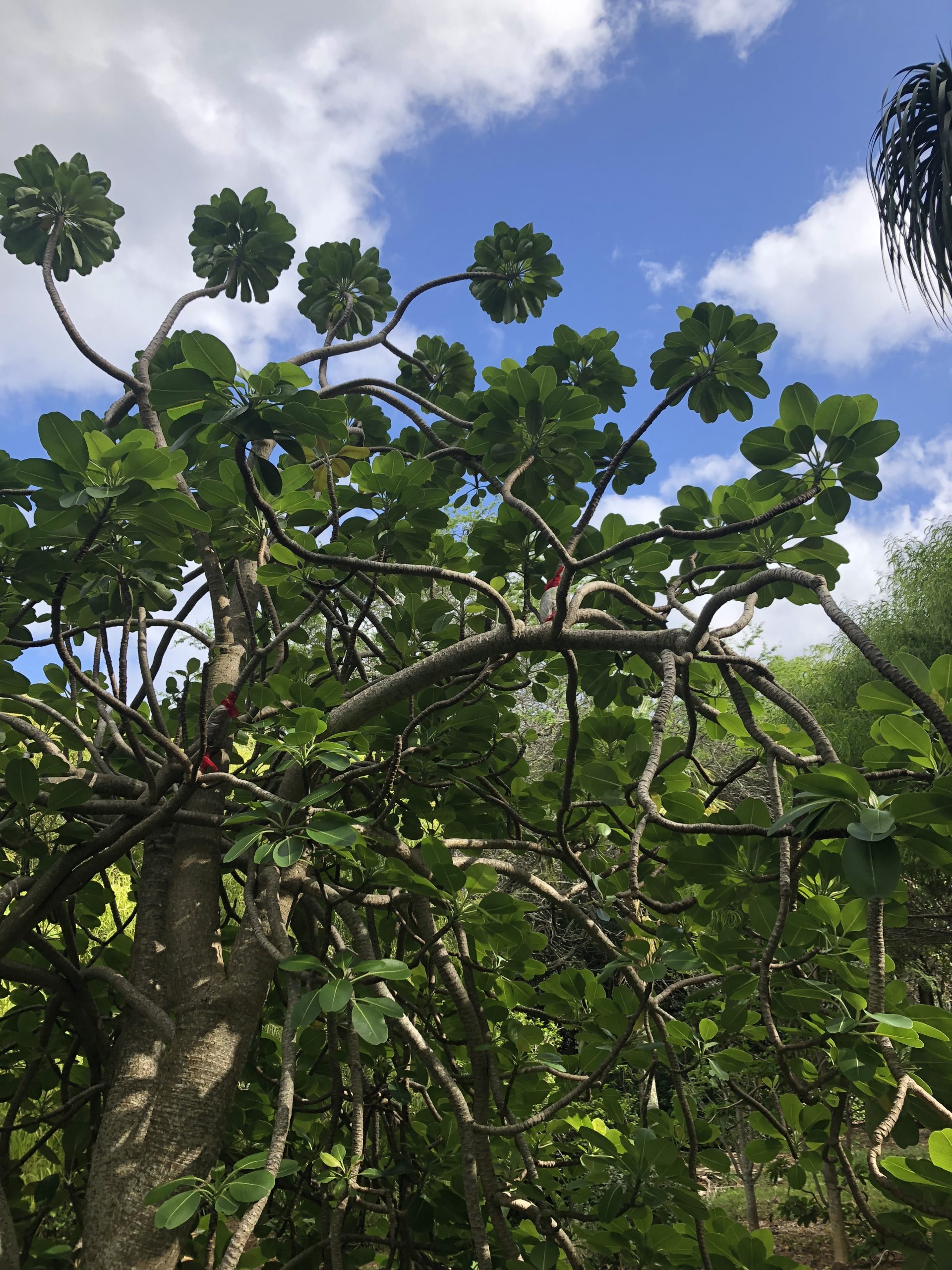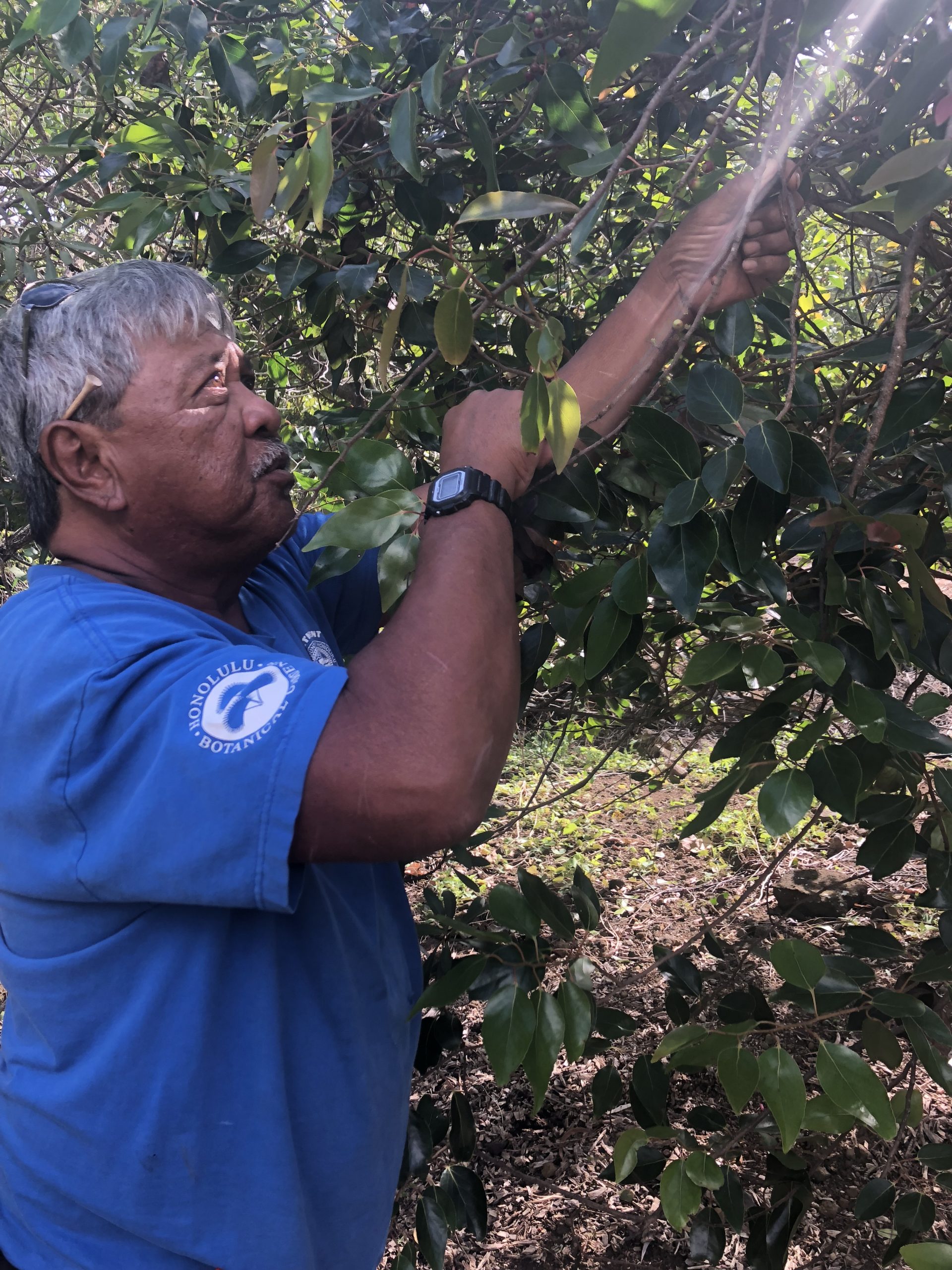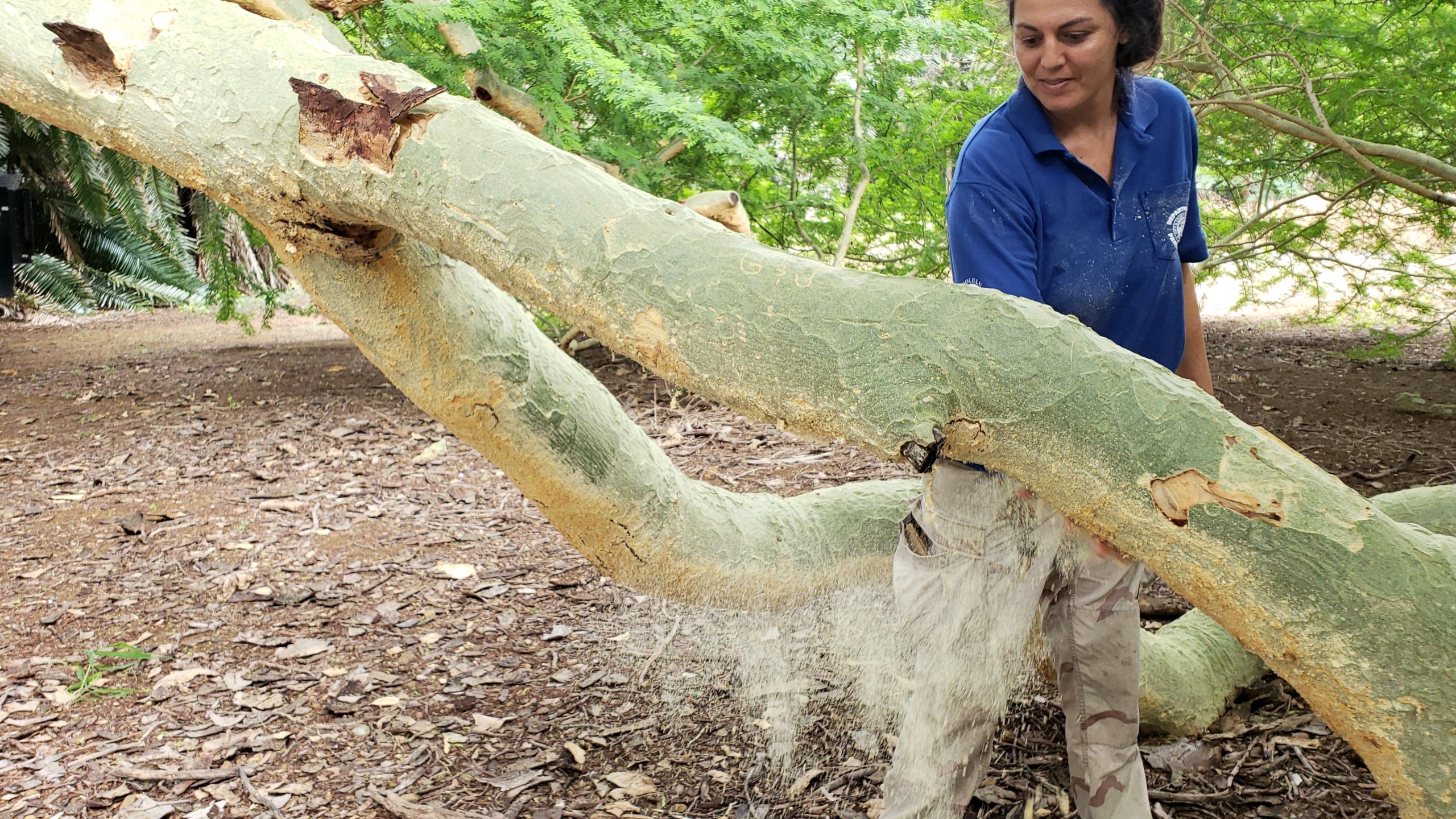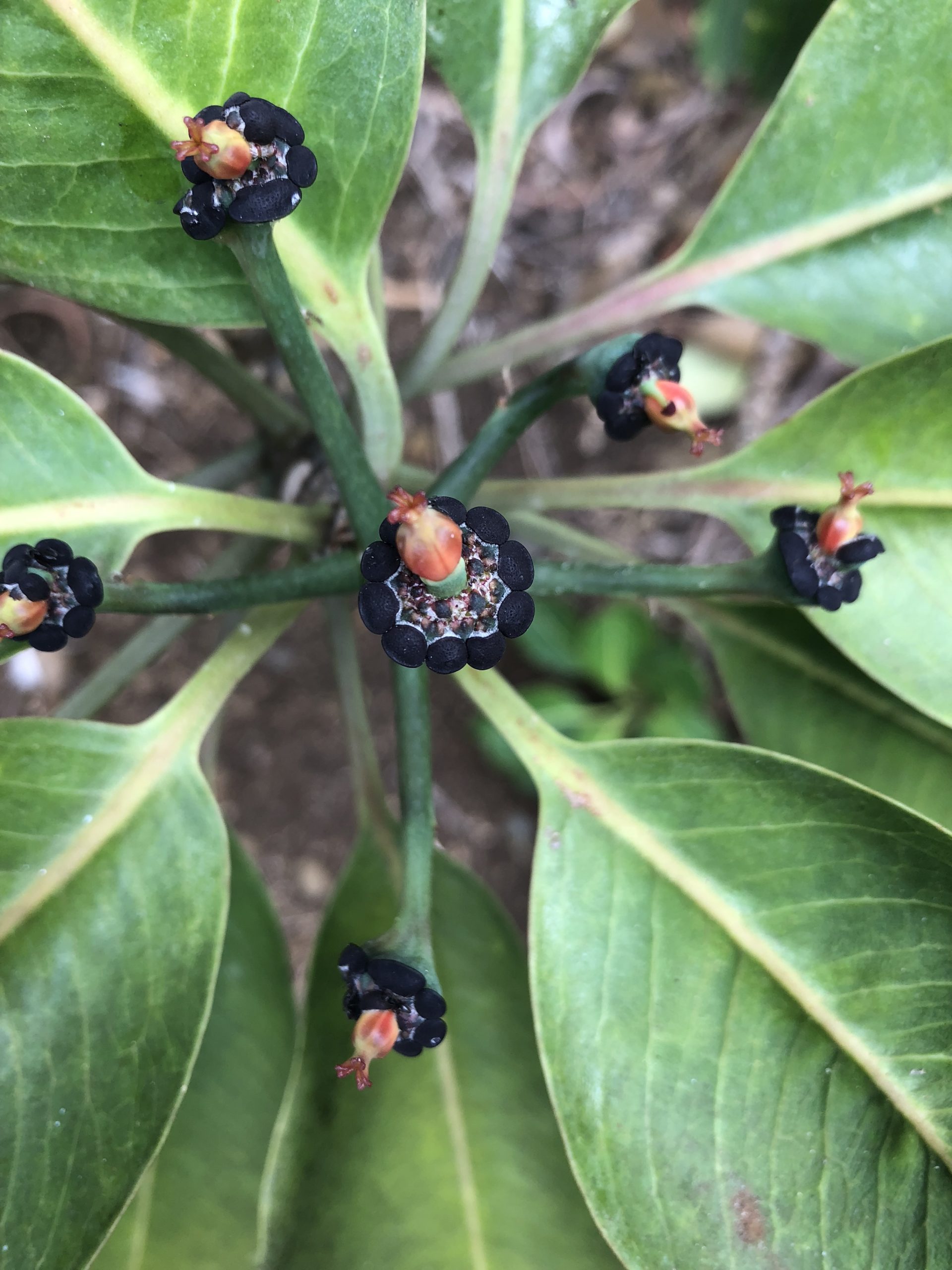From Field to Garden
Honolulu Botanical Garden’s new horticulturist and curator comes from a field background – trekking to remote areas to monitor and protect the rarest of the rare plants in Hawai’i. Now that she’s found her way into horticulture, Talia Portner hopes to bring what she learned while immersed in wild habitats – and a few of those rare plants – into the garden with her.
Talia Portner, Honolulu Botanical Garden’s (HBG) curator and horticulturist, comes to the horticultural world through her years of working with rare plants in their natural habitats. This background has taught her about the needs of plants and instilled in her a natural aesthetic. Talia hopes to incorporate both of these traits, with all she is learning from her colleagues, into the five gardens she works with across O’ahu.
Though her biology education focused on human biology, Talia was quickly drawn into the world of plants and the plight of rare plants as she entered the workforce. There is no shortage of rare plants in Hawai’i, with so many naturally rare endemics and so many threats wrought by changes to the islands. Talia spent nearly thirteen years with Hawai’i’s Plant Extinction Prevention Program (PEPP), working with the rarest of the rare in Hawai’i – the species with less than 50 wild individuals remaining. In the field working with these species, and enjoying seeing them in their natural habitat, Talia repeatedly encountered the hardships of working with such species in the wild. The long treks out to field sites which only allowed for limited work to get done, the small populations, etc. helped her recognize the need for conservationists to be able to access these plants in a different setting.
-

Euphorbia haeleeleana, the Kauaʻi spurge, is a species of flowering plant in the croton family, Euphorbiaceae, that is endemic to the islands of Kauaʻi and Oʻahu in Hawaii. Like other Hawaiian spurges it is known as `akoko. (from Wikipedia). -

Koko Crater Botanical Garden’s recently retired manager, Robin Sunio, checks on Kaua’i spurge. -

Koko Crater Botanical Garden’s recently retired manager, Robin Sunio, checks on Kaua’i spurge.

Partners within PEPP, including CPC institutions Harold L. Lyon’s Arboretum and HBG, have taken in these rare species, and Talia hopes to use her new position at HBG to expand their role in inter situ conservation. Always having been able to see the big picture in situations, Talia is excited to become a bridge between the in situ conservation work of her experience and the important ex situ collections she can influence now as she serves as a curator acquiring plants for the gardens.
Koko Crater Botanical Garden, for instance, presents a great opportunity for inter situ conservation. The 60-acre garden on the basin floor of a dormant volcano supports 50-year old native plants that the public rarely gets to see and has had been part of some great conservation projects. Learning from the garden’s recently retired manager, Robin Sunio, she learned how to incorporate knowledge of the climate and trends into decision making at the garden. As someone who spent a lot of time making observations in the field, Robin’s observation approach to garden management proved invaluable during her transition into the garden. Talia sees Koko Crater, and its amazingly fertile soils, as an ideal garden to increase the number of wild-collected individuals, by collaborating with partners in the field as well as the Lyon Arboretum seed lab.
Talia brings with her many of her connections from PEPP, many of whom are, like herself, excited to see HBG grow their conservation work. At a recent meeting with the state botanist on O’ahu, her former PEPP supervisor, the two quickly identified a list of a dozen species for future collaborations. One of the species, ha’ele’ele’ana or Kaua’i spurge (Euphorbia haeleeleana), is a dioecious species (having separate male and female plants) whose five individuals in the garden have yet to produce fruit, limiting their conservation value. Talia hopes to bring in more males to increase the amount of pollen.
Gardens such as HBG are great receptacles for plants too difficult to meaningfully work with in the field. And they are also a great venue for outreach and education. Learning more about garden design, building on her experience in the floral design business and her natural aesthetic strengthened by her time in natural habitats, Talia looks forward to building more ‘habitats’ into the gardens. Display is an opportunity to educate, and displaying trees with their associated species from the wild presents a great opportunity to help educate the public on the amazing flora of Hawai’i.
Though Talia’s career has spanned different disciplines, each has been important in rare plant work. She is bringing what she learned in one arena into the next, and reminding us that the lines between disciplines are not hard and fast. Plants benefit when conservationists don’t do their research and work in isolation, but keep the connections between their work strong.
